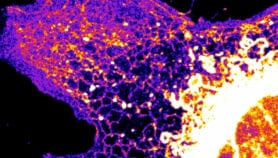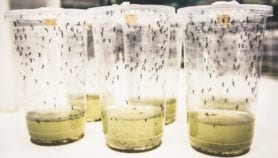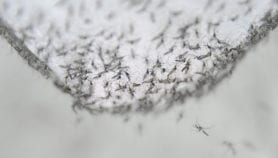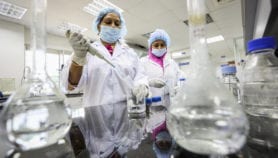By: Duncan Mboya
Send to a friend
The details you provide on this page will not be used to send unsolicited email, and will not be sold to a 3rd party. See privacy policy.
[NAIROBI] A new front in the war against deadly banana diseases opens next month, with seven African countries uniting to launch a spatial surveillance programme.
The International Institute for Tropical Agriculture (IITA), based in Nigeria, is to lead the programme, which will focus on limiting the spread of banana bunchy top disease (BBTD) and banana Xanthomonas wilt (BXW).
These diseases threaten the livelihoods and food security of over 70 million people in Sub-Saharan Africa. No banana varieties are known to resist BBTD or BXW, and there is a danger that all familiar banana types will be wiped out if urgent action is not taken, according to the IITA.
Policymakers and researchers from Burundi, the Democratic Republic of Congo, Kenya, Rwanda, Tanzania, Uganda and Zambia met in Kigali, Rwanda, last month (25–29 January), to be trained in disease surveillance and control methods. These countries have all either reported the presence of BBTD or are at high risk of contracting it from a neighbour.
"The aim of the training was to link research and government staff within and between countries," said Fen Beed, IITA plant pathologist for East and Southern Africa.
Under the programme, researchers will use Geographic Positioning Systems (GPS) and Geographic Information Systems (GIS) to develop a visual record of disease distribution. A second workshop in June will hone surveillance skills.
IITA began a two-year study last October to examine, among other things, why BBTD has spread so rapidly in the past two decades.
Lava Kumar, an IITA virologist, said the study’s researchers are taking a variety of approaches to tackling the virus and its carrier.
"[This work] is expected to provide a reprieve in the medium term and sustainable solutions in the long term," he said.
Murimi Kinyua, principal pathologist and crop protection coordinator for the Kenya Agricultural Research Institute, said scientists from his institution and the University of Nairobi are also conducting research in western Kenya, where a banana wilt disease outbreak was first reported in 2006.
"We are screening the germplasm from the already affected plants to ascertain its resistance and the extent of the disease distribution," Kinyua told SciDev.Net.
BBTD is caused by the banana bunchy top virus (BBTV) spread by an aphid. It causes narrow bunched leaves and stunted fruitless plants, which eventually die. It is difficult to identify in newly infected plants and is often missed by farmers and government agencies in the region, resulting in its unabated spread.
BXW is a bacterial disease that causes yellowing and wilting of the leaves, uneven and premature ripening of the fruits and, eventually, the plants to rot and die.













